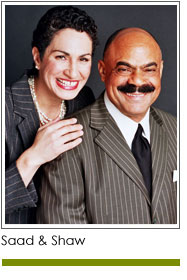 Engaged and effective nonprofit board members are the dream of board chairs and executives. “Ah, if only our board members were more engaged....” is a common refrain. “I can’t keep fighting my board,” is another. Board members also have concerns, “I don’t know why we have board meetings: the executive makes the decisions, and expects us to rubber stamp them.”
Engaged and effective nonprofit board members are the dream of board chairs and executives. “Ah, if only our board members were more engaged....” is a common refrain. “I can’t keep fighting my board,” is another. Board members also have concerns, “I don’t know why we have board meetings: the executive makes the decisions, and expects us to rubber stamp them.”
One perspective reflects a desire for board members to attend meetings regularly, to come prepared, to work with other board members between meetings, and to provide guidance and oversight that reflects a deep understanding of the organization or institution’s work. The second reflects a frustration, usually on the part of an executive, that board members are not in alignment with the executive’s vision and strategies. The third speaks to board members confusion and disengagement.
There is one tactic that can assist with these three challenges: open, honest, in-person communication. Scheduling and thoughtfully preparing for conversations prior to a board meeting can change what happens at the meeting. It sounds simple, but it takes time, requires preparation, and needs to be applied consistently. The following are three suggestions for how to employ this tactic.
First, if you are a board chair make sure you know the vision of your executive. What is she seeking to accomplish? How does she want to accomplish it? What will be the impact? What will it cost? What does she need from the board for the organization or institution to bring her vision to life? Take time to learn her leadership and communication styles. Meet with her regularly and strategize how to best engage the full board and committees in advancing her vision. Work with her to create the board agenda, ensuring the concerns of both board members and the executive are included.
Second, if you are an executive take the time to meet regularly with your board chair, to share your strategic thinking, to ask for counsel, and to provide updates on operations. Form a partnership that acknowledges and respects your board chair’s leadership, vision, expertise and position. Asking for guidance and creating a shared agenda can help surface best thinking and create a strong partnership.
Third, both the executive and the board chair should take time to meet individually with board members prior to each board meeting. This is especially important if the board meets quarterly, or less often. Each of you need to personally share updates, gain insights and involvement from individual board members. Take the time to share organizational updates and challenges, successes, strategies and potential challenges. Listen to each board member’s concerns, interests and ideas. Act on those you can.
It takes time to have these meetings. It also yields results. A nonprofit’s board is one of its most valuable resources. Take the time to strengthen your relationships.
Copyright 2014 – Mel and Pearl Shaw
Mel and Pearl Shaw position nonprofits, colleges and universities for fundraising success. For help with your campaign visit www.saadandshaw.com or call (901) 522-8727.














